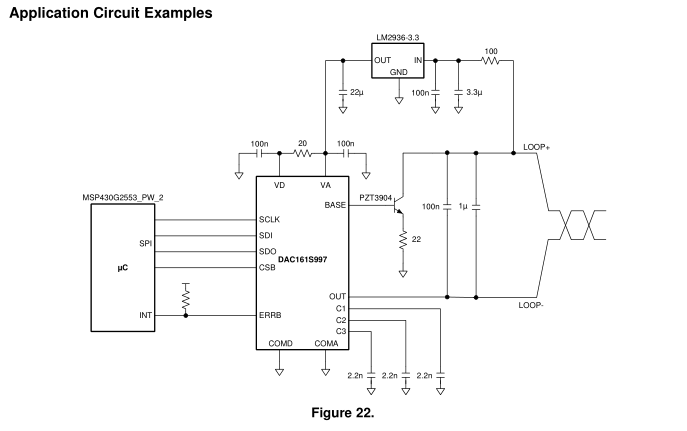Hello,
I am using the DAC161S997 to create an analog control signa that loads the device anywhere from 4-20mA out the output. This signal is used to control a load that may or may not have a common ground with the transmitter.
I think I have run into a problem with my implementation. I would like to have loop power on our board but with the way COMA and OUT are configured, it looks like I would actually need a floating/isolated power supply on board for the loop power.
The first two figures of the datasheet (SNAS621 –JUNE 2013) show the emitter resistor connected to local ground and the OUT pin (Loop-) connected to the loop (external) ground and it looks like COMD & COMA are connected inside the IC by a 40 ohm resistor. (Fig 9 & 10)
So I would need to place the loop receiver resistor (nominally 250 ohm) between OUT and the ground of the loop power supply. This would raise the OUT pin up by as much as 5V (@20mA not account for wiring).
As a separate question the eval board has a 3.9V Zener (D1) inline with the transistor. What is the purpose of this zener? The datasheet never shows/discusses this diode.
Thank you for your help.
Ryan May


